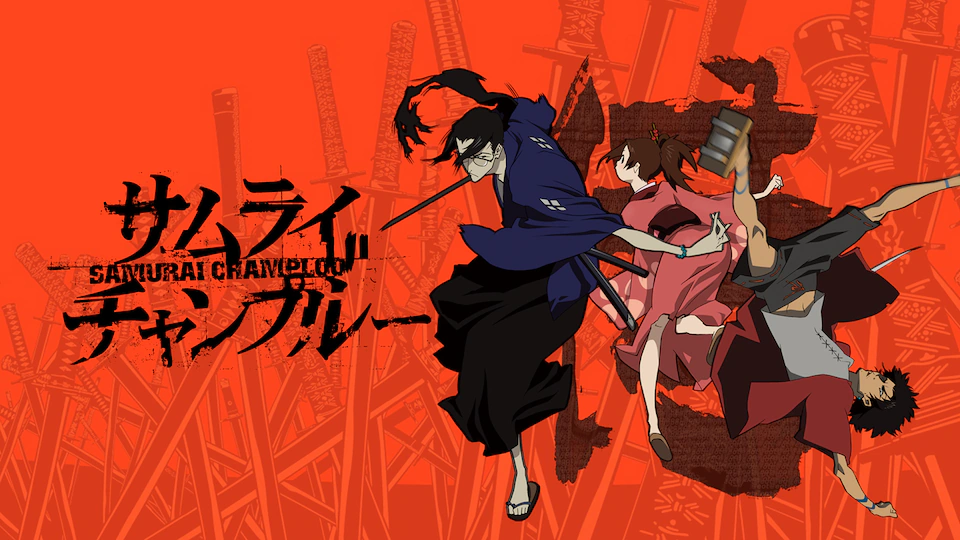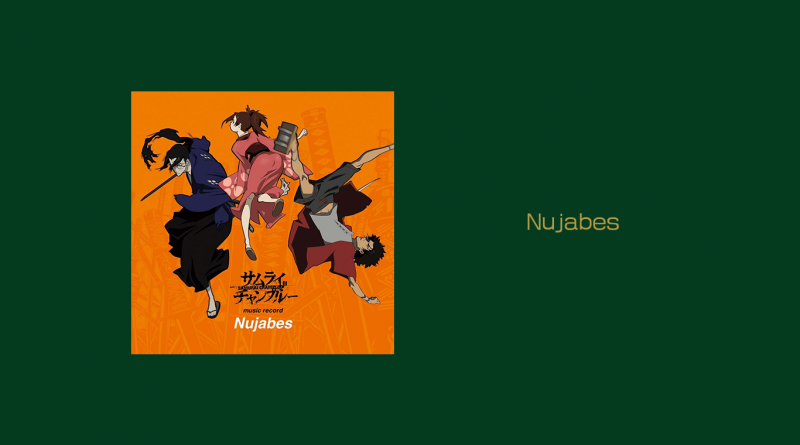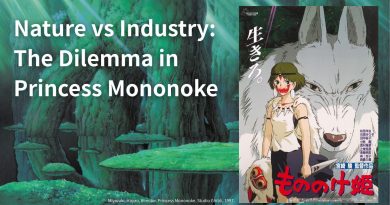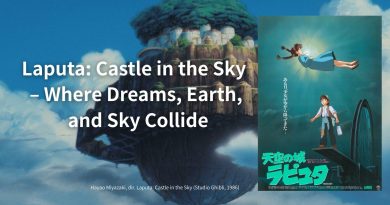Who is Nujabes? A Legend of Lo-fi HipHop: His Iconic Tracks, Career, and Samurai Champloo
Nujabes (also known as 瀬場 淳, real name: Yamada Jun) was a trailblazing trackmaker, artist, and music producer often called “The Godfather of Lo-fi HipHop” or “The Pioneer of Jazzy HipHop in Japan.
He is also described as “the most famous Japanese trackmaker in the world.
Tragically, he passed away in February 2010 at the young age of 36 due to a traffic accident, yet his music continues to be cherished worldwide to this day.
Interestingly, the name “Nujabes” is a reversal of his given name, Jun Seba.
Characteristics of Nujabes’ Music
The warmth and emotional depth of his music are what make Nujabes’ work so distinctive.
In the world of HipHop, where digital programming and sampling are widely used, creating “warm music” is considered a challenge.
However, Nujabes achieved this with his rare talent, crafting music that feels both soothing and nostalgic.
While Nujabes operated within the HipHop genre, his focus on warm, quiet, and impactful melodies often drew connections to healing and New Age music.
At the time, HipHop producers primarily chopped up samples into minute pieces to create new melodies.
Nujabes, however, boldly utilized larger melodic segments.
For instance, his iconic track *Reflection Eternal* samples Noriko Kose’s *I Miss You* in a way where the source melody remains clearly recognizable.
Nujabes reportedly often said, “I just want to find the best two bars,” showcasing his meticulous approach to beats, particularly focusing on loop structures.
※ As someone with limited musical knowledge, I’ve consolidated this section from multiple articles and interviews.
※ I have used or omitted honorifics for names depending on what felt natural in context.
Apologies to anyone who may find this inconsistency unsettling.
Nujabes’ Career
Born on February 7, 1974, in Tokyo.
In 1995, at the age of 21, he opened the record store “Guinness Records” (originally “Bongo Fury Records”) on the 4th floor of Takano Building in Shibuya’s Udagawacho district.
The store was said to provide a welcoming space for enjoying music without the intimidating atmosphere typical of record shops in Shibuya at the time.
Chairs were placed in front of the listening stations, creating a relaxed environment.
Nujabes reportedly treated the record store as an “information center” for creating his own tracks, according to an interview with m-flo, who had connections with him at the time.
※1
In 1998, Nujabes began producing tracks in earnest as a music producer.
In 1999, he released a 12-inch single record under his own label, “Hyde Out Productions” (later stylized as “Hydeout Productions”).
To avoid emphasizing that it was a Japanese label, some mistakenly believed Nujabes was an overseas producer.
His early works, released exclusively on 12-inch vinyl, were also less accessible to the general public.
In 2001, he released *Luv(sic)*, a collaboration with Shing02, whom he contacted via email while Shing02 was residing in Berkeley.
Shing02 described his first impression of Nujabes as “a slightly laid-back person.
” ※3
In 2002, *Luv(sic) Part 2* was released.
In August 2003, Nujabes released his first album, *Metaphorical Music*.
The response exceeded expectations, and record stores found it challenging to keep up with additional orders.
The album also garnered significant attention from female listeners, which was rare for HipHop at the time.
In 2004, the TV anime *Samurai Champloo* aired.
Nujabes was among the music production team and was responsible for tracks like the opening song and the ending theme.
*Samurai Champloo* was not initially well-received in Japan.
The director, Shinichiro Watanabe, speculated that the innovative combination of anime and HipHop might not have resonated with the otaku community at the time.
※3
That same year, Nujabes also produced music for a Comme des Garçons fashion show.
While public recognition was low, his reputation among music enthusiasts and the culturally attuned community was exceptionally high.
In 2005, *Samurai Champloo* aired on Cartoon Network in the United States, where it received high acclaim, leading to multiple reruns.
The show gained popularity in other regions as well.
In November, Nujabes released his second album, *Modal Soul*.
This album showcased new elements like live instrumentation and house music influences.
*Luv(sic) Part 3* was included in this album and became particularly popular in the U.
S.
By this time, Nujabes had established himself as one of Japan’s premier trackmakers and producers, with his record store expanding to multiple locations.
In February 2010, Nujabes tragically passed away at the age of 36 due to a traffic accident.
In late June, his record store, Guinness Records, also closed, leaving a legacy cherished by many.
In 2011, *Luv(sic) Part 4*, which Nujabes had started producing before his passing, was released, followed by his third album, *Spiritual State*.
In 2012, *Luv(sic) Part 5* was released, and in 2013, *Luv(sic) Grand Finale/Part 6* was completed based on a beat titled “Grand Finale” found on Nujabes’ mobile phone.
From the late 2010s, the *Lo-fi Hip Hop* genre gained popularity on platforms like YouTube, further expanding awareness of Nujabes.
In 2018, Spotify ranked Nujabes as the third most-streamed Japanese artist globally.
Nujabes’ dream of elevating HipHop to the level of other music genres has arguably become a reality.
His achievements and the influence of his music have led to new developments in HipHop, making it more accessible and beloved by a broader audience.
Iconic Tracks & Recommended Songs
Luv(sic) Series
※The video features Part 1 of the series.
If you’re new to Nujabes, this is where most people recommend starting. It’s worth noting that Parts 1–3 and Parts 4–6 are somewhat distinct, akin to how the *Star Wars* trilogies differ. Originally, the series was meant to conclude with Part 3. Parts 4–6 were completed posthumously, based on Nujabes’ unfinished work.
That said, there’s no strict need to listen in order. You can start with whichever part resonates with you. Personally, I particularly enjoy Parts 2 and 3.
Reflection Eternal
This is one of Nujabes’ most beloved tracks.
As mentioned earlier, the song samples Noriko Kose’s I Miss You.
The track’s popularity brought renewed attention to Kose’s work, highlighting the brilliance of the original as well.
Lady Brown
Included in the first album Metaphorical Music, this track features a harmonious blend of rap and melody.
It samples Luiz Bonfá’s The Shade of the Mango Tree, creating a beautifully seamless listening experience.
Feather
This is one of the most frequently listened-to tracks outside of the Luv(sic) series.
Perfect Circle
A track with a laid-back beat, it’s featured in the album Luv(Sic) Hexalogy.
World’s End Rhapsody
This track blends beats, vocals, and piano harmoniously.
Among Nujabes’ works, it has a relatively pop-like feel.
Kumomi
A track inspired by Nujabes’ childhood memories of Kumomi in Nishiizu.
Known for its nostalgic and warm tones, the song captures a sense of bittersweet emotion, reflecting the artist’s fond memories of visiting Kumomi with his family.
Samurai Champloo and Nujabes

Samurai Champloo is an anime series that aired from May to September 2004.
It also had a manga adaptation that presented different episodes from the anime.
Here, we focus on the anime.
Original Work: Manglobe
Director: Shinichiro Watanabe
Music: Tsutchie, fat jon, Nujabes, FORCE OF NATURE
Episodes: 26
The anime is set in a world where samurai carry swords, yet the characters use modern Japanese slang, and elements like blond hair, piercings, and beatboxing appear, creating a deliberately anachronistic atmosphere.
The HipHop elements scattered throughout contribute to its unique charm, captivating many fans despite its unconventional style.
Nujabes contributed to the soundtrack by composing the opening theme “Battlecry” and producing the ending track “Shiki no Uta.
Renowned Anime Director Shinichiro Watanabe’s Deep Connection to Music
Shinichiro Watanabe is a celebrated anime director known for works like Cowboy Bebop (1998) and Kids on the Slope (2012).
As a music enthusiast, Watanabe integrated various genres—jazz, blues, rock, techno—into Cowboy Bebop, showcasing his musical sensibilities.
The success of Cowboy Bebop allowed him to delve deeper into music for his subsequent projects, culminating in the collaboration with Nujabes for Samurai Champloo.
In an interview, Watanabe revealed that during the production of Samurai Champloo, he would spend weekends exploring record shops in Shibuya for new releases.
※1
It was during one of these music hunts that he encountered Nujabes.
Interestingly, since Nujabes rarely gave interviews, Watanabe initially didn’t even realize Nujabes was Japanese.
When Watanabe approached Nujabes with the offer to work on the anime, Nujabes was hesitant.
To make his decision, he consulted with his friend ☆Taku Takahashi from m-flo, who strongly encouraged him, saying, “It’s Nabe-shin (Watanabe’s nickname)! You should definitely do it.
” ※1
The Downfall of Manglobe, the Studio Behind Samurai Champloo

Manglobe, the animation studio behind Samurai Champloo, produced the series with impressive quality despite it being their debut project.
Unfortunately, the studio declared bankruptcy in 2015.
Apart from Samurai Champloo, Manglobe also worked on adaptations of popular manga such as The World God Only Knows and Hayate no Gotoku! (Season 3 and a theatrical movie).
Recommended Nujabes Tracks from Samurai Champloo
Battlecry
This track features Shing02, also known for his work on the Luv(sic) series.
The stylish opening movie of Samurai Champloo blends seamlessly with the song, making it an unforgettable experience.
At the time, anime was often looked down upon as a niche or inferior medium, but this opening song and animation broke through those stereotypes.
Shiki no Uta
The ending theme of Samurai Champloo, sung by MINMI, is a beautiful song with a nostalgic and slightly melancholic vibe.
According to MINMI’s blog, Shiki no Uta was originally an instrumental track by Nujabes.
However, MINMI strongly requested to use it and added her vocals to complete the song.
※5
References
※1 『星野源のおんがくこうろん nujabes』 2024年10月25日放送, NHK Eテレ ※2 Wikipedia: Nujabes ※3 『90年代、東京。ある若者がNujabesを名乗り、ヒットメーカーになるまで』, 2020年, 大前 至 ※4 Nujabesについての個人的メモ Note, 2020年3月, フクガラ ※5 MINMI ~勝手に見ないでBlog~ nujabes, 2010年3月, MINMI







